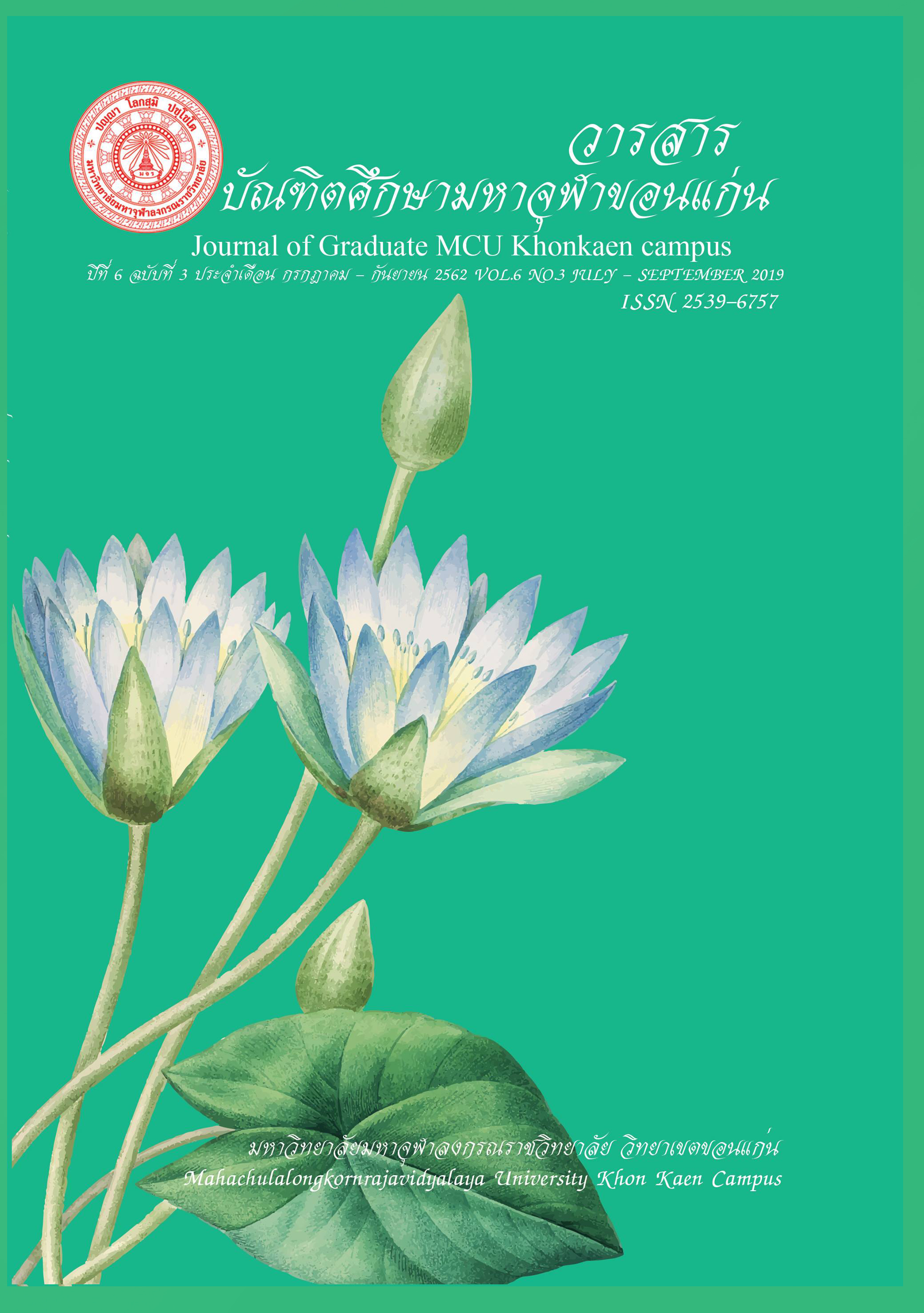An Innovation for Effective Educational Management throughIntegrated and Participatory Process of Schools under Office ofSecondaryEducational Service Area
Main Article Content
Abstract
The objectives of this research were 1) to study the components of the innovation of educational management through integrated and participatory process, 2) to develop the above-stated innovation, 3) to study the effectiveness of the innovation application in schools under Office of Secondary Educational Service Area. The research comprised 3 phases to be in response to the stated objectives. Phase 1: document analysis, brain-storming, best practice study. Phase 2: making the draft of the innovation by brain–storming of experts, focus group discussion to deliberate and confirm the drafted innovation. Phase 3: try-out the innovation at Bankai secondary school in Chaiyaphum and evaluate the feasibility, appropriateness and utility of the innovation.
The target group for planning and designing learning activities through integrated and participatory process was 27 teachers including administrators. The target group for trying the innovation was 258 students of junior level in secondary schools. The research instruments were interview form, recording - form, satisfaction evaluation form, and evaluation form for the feasibility, appropriateness and utility of the innovation. The statistics used for data and content analysis were percentage, mean and standard deviation (S.D.).
The research results were as follows:
- The components of the innovation of integrated educational management comprised 3 components as follows: 1) learning activity through integration of 4 cross-area subjects of science, technology, engineering and mathematics (STEM), 2) learning activity through integration of cross–area subjects of Thai, English, Social study, and attitude building (TESA),
3) learning activity through integration of cross–area subjects of technology, arts and physical education (TAP). - The development of the innovation which consisted of 3 components was operated for success through integrated and participatory process had the following drivers: 1) brain–storming, 2) co–planning,
3)co–working, 4) co–monitoring and evaluation, 5) co–developing and
6) co–celebrating. - The results of the application of the innovation through the integrated and participatory process indicated that students’ learning achievement, after post–test, was higher with statistical significance of 0.1. The satisfaction of students and teachers toward learning activities was at the highest level; Moreover, from the evaluation of the innovation, it was also found that the feasibility, appropriateness and utility of the innovation were all at very high level.
Article Details
References
PrachonglukBuaklang. (2018). The Development of Teachers on Integrated Learning Organization : A Case Study of Pholprachanukool Municipal School. Education Section.MuangpholMunipality.Muangphol.Khonkaen.University Journal,Mahasarakam Rajabhat University; W. MRM.
PrachuabNuliang. (2016). A Participative Management Model of Education in Patalung.Journal of Parichart, Taksin University.
SamleeRaksutee. (2001). Techniques for Learning Management and Writing out Lesson Plans with Intensive Focus on Leanness. Bangkok: Development Education.
SriwanChatsuriyawong. (2016). Instructional of Stem Education Local Integrat.Education Journal, Silpakorn University.

